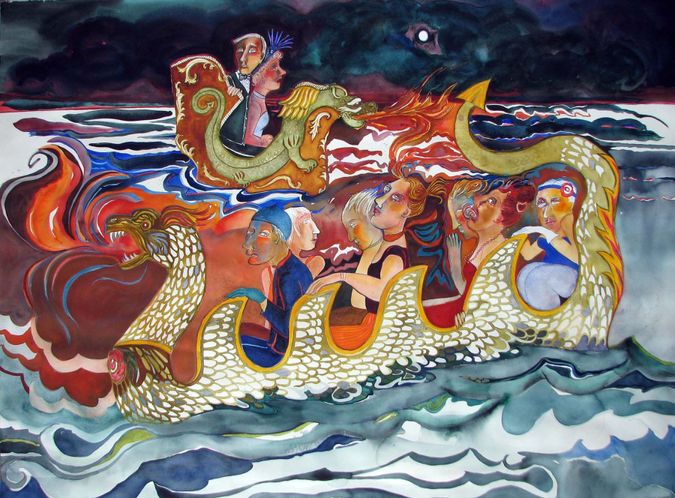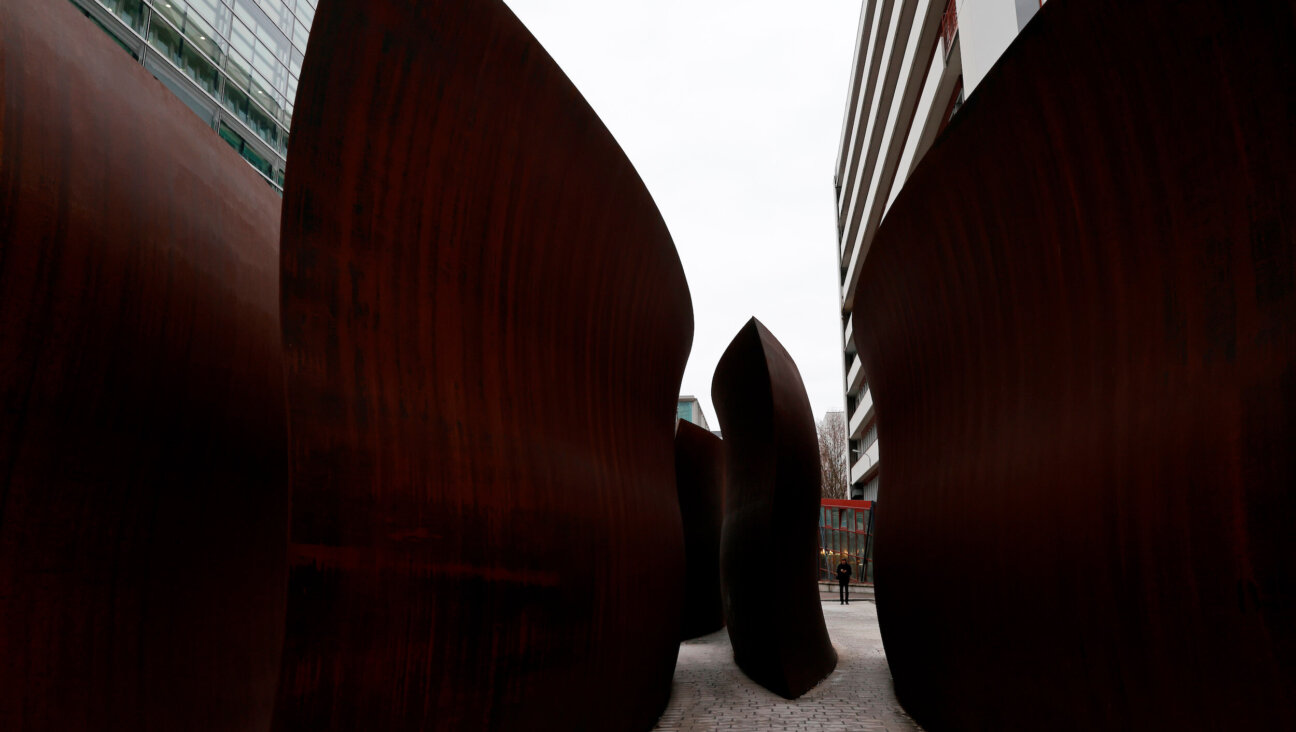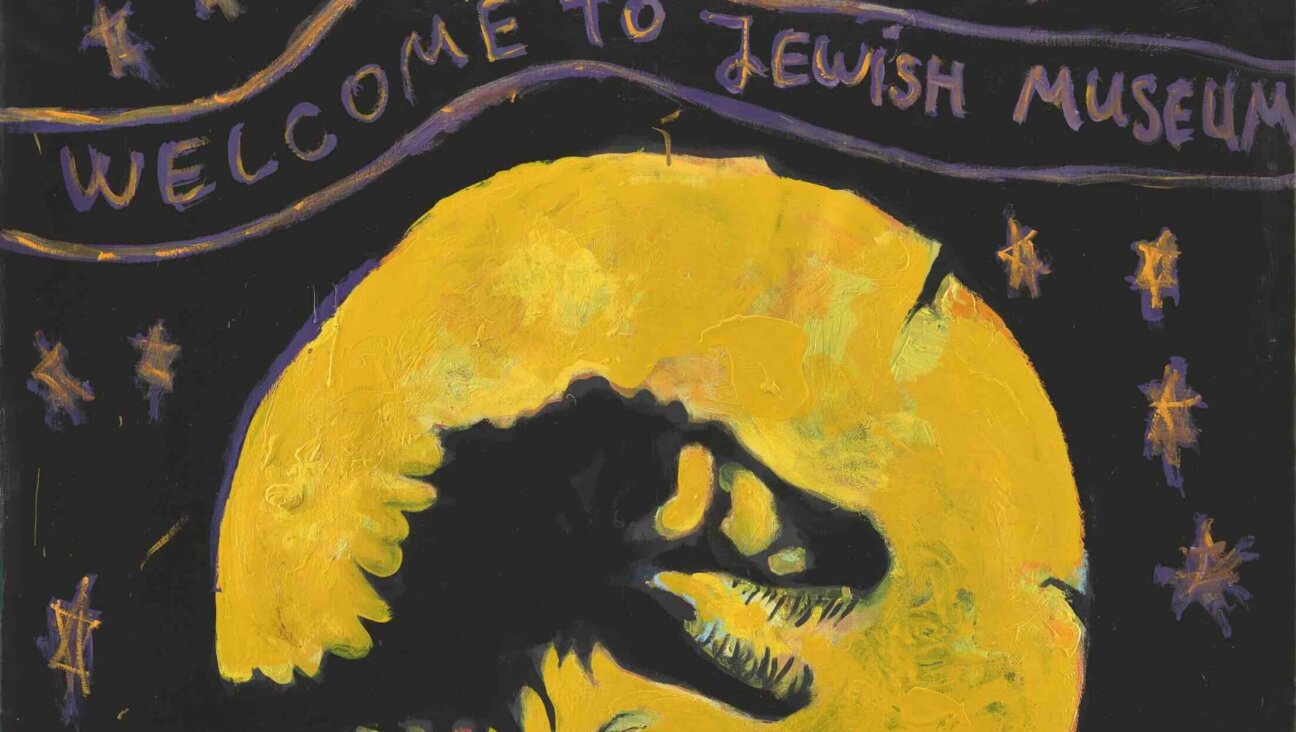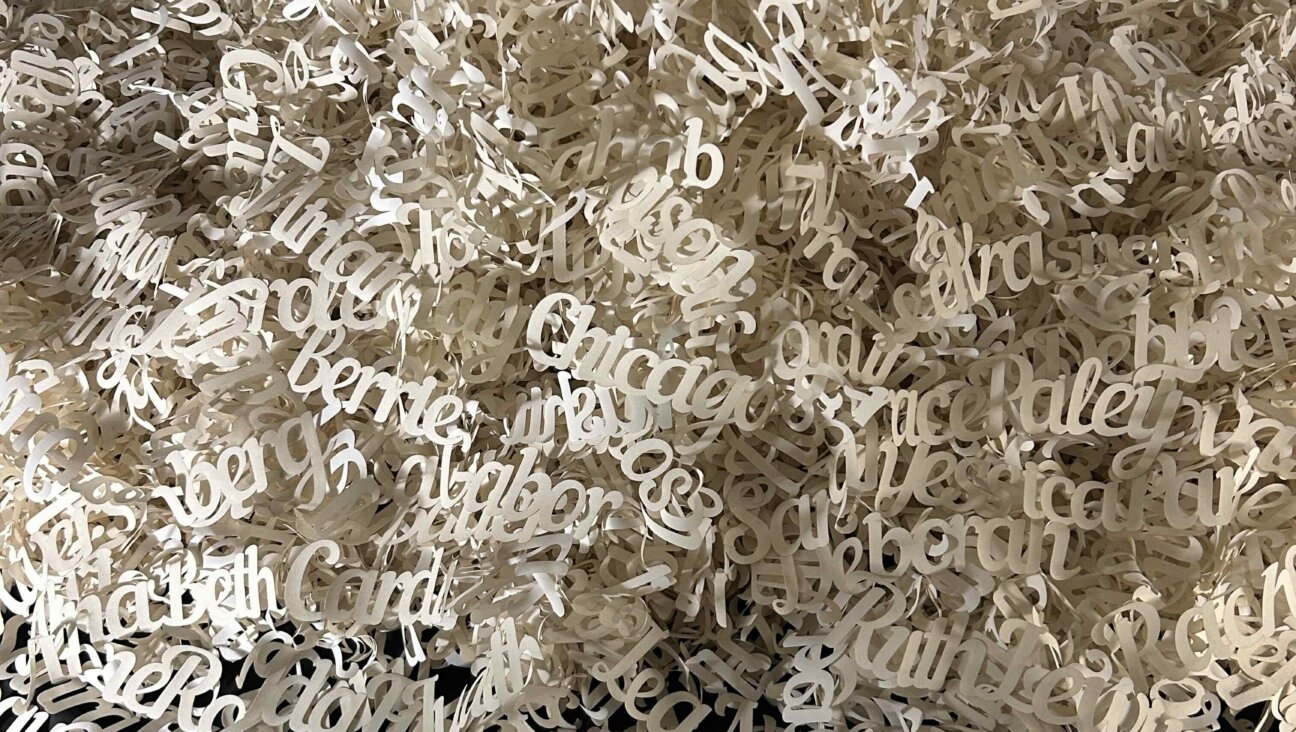The Life and Death and Life of Coney Island

Image by Karen Brussat Butler
Right now, on the bleeding edge of December, Coney Island is all over New York City. Just as the weather gets frosty and summer beach days recede from memory, the beach is suddenly everywhere.
There’s a big exhibition at the Brooklyn Museum titled “Coney Island: Visions of an American Dreamland, 1861-2008,” which opened on November 20. There are smaller shows at the central branch of the Brooklyn Public Library, the City Lore gallery in Manhattan’s East Village, the Valentine Museum of Art in Flatbush and in Coney Island itself, at the Coney Island Museum. There is also “Last Days of Coney Island,” a new movie by animator Ralph Bakshi, which was released on Vimeo at the end of October. As winter sets in and the temperature drops, all eyes turn to Coney.
That seems appropriate, though. If it were summer, we wouldn’t be thinking about Coney Island — we would be at Coney Island. Instead of looking at art in a museum, we’d be roasting on the beach, riding the Cyclone, eating hot dogs until our guts burst. Only now, when those pleasures seem so abstract, do we stop and think: What does Coney Island mean?
That might be an unnecessary question — does Coney Island have to mean anything, beyond what it obviously is? For generations of New Yorkers, from immigrant Jews and Italians living in Brownsville to current-day Park Slope parents, Coney Island is a beach you can get to by subway, with roller coasters and carnival games to boot. Even if we’re not living three families to a tenement, swimming and sunbathing have a self-evident appeal.
But if there’s a common assumption underlying all of these exhibits, it’s that Coney Island does mean something — that it’s not just a place or the sum of its oddball parts, but an idea, a fantasy, a vision. It’s the site of hedonistic summertime pursuits as well as a hallucination, a mirage. Coney Island constantly struggles to break the hold of reality and launch itself into dream.
Consider the iconography of Coney Island. There’s the annual Mermaid Parade in June, with its pageant of fish folk wearing little more than blue-and-green body paint. There are the sideshows, which display the weird and uncanny as they inhabit human form. Consider the actual neighborhood of Coney Island lying behind the beach and the boardwalk, a gritty and desolate place with street names like Neptune and Mermaid. Indeed, the mermaid is the great symbol of Coney Island: half-human and half-fish, a creature of both land and sea, mortal but not quite of this Earth. To quote Lawrence Ferlinghetti quoting Henry Miller, there’s a “Coney Island of the mind” as well as a Coney Island of the flesh. Where and how the two intersect is the question these exhibits try to answer.

Image by Courtesy Brooklyn Museum
It’s the smaller shows that do this best. Rather than presenting the entire history of Coney Island, they try to capture its soul. So it is at “Sodom by the Sea Salon,” the show at the Coney Island Museum under the auspices of Coney Island USA, a not-for-profit arts organization responsible for much of Coney Island’s present-day culture. The exhibition is an eclectic affair, with works by more than 75 contemporary artists in nearly every two-dimensional medium, including photos, pen-and-ink drawings, paintings, pastels and watercolors.

Image by Keith Griffiths
Here we see every shade of Coney Island’s weirdness: a photo by Eliza Rinn of two blue-and-gold-sequin-clad Mermaid Paraders kissing in the surf; a painting by Keith Richard Griffiths of a fish with suspenders and a pompadour smoking a cigar; a photo by Bruce Handy of the annual New Year’s Day Polar Bear Plunge; and a painting by Kelynn Z. Alder of a goofy mutt named the “Coney Island Dog” (“fun in person!” it advertises). Inevitably, there are images of the “funny face,” a demonic figure with an evil grin and horn-like tufts of hair that once adorned George C. Tilyou’s Steeplechase Park. If you want to experience the distilled essence of Coney Island, “Sodom by the Sea” is the place to go.
•
This exhibitionist flair didn’t arise in a vaccuum, however; the contemporary incarnation of Coney Island is a phoenix, risen from the ashes of its past. Who was George C. Tilyou, after all, and what was Steeplechase Park? For that information, you need to visit “Visions of an American Dreamland” at the Brooklyn Museum, 7.5 miles and 17 subway stops away, where the history of Coney Island is presented through the prism of 140 paintings, artifacts, photographs, posters and film clips, and curated by Robin Jaffee Frank of the Wadsworth Atheneum Museum of Art in Hartford, Connecticut. (The exhibit was shown at the Wadsworth and at the San Diego Museum of Art before coming to Brooklyn, and it will travel on to the McNay Art Museum in San Antonio after it closes in Brooklyn in March.) Adjoining the main exhibition is an installation by Stephen Powers titled “Coney Island Is Still Dreamland (To a Seagull),” comprising massive collages of hand-painted signs, and “Forever Coney,” a selection of photos from the museum’s own collection.
The earlier parts of the exhibit are the most interesting, because they show how Coney Island got to be that way. Its history goes back to 1829, when its first hotel made it one of the country’s first seaside resorts. By the Civil War, Coney Island was a destination for New York’s wealthiest citizens and, as transportation improved, the less wealthy ones as well. Even then it was a melting pot within a melting pot, a place where all the populations of New York bathed together. As “Down in Coney Isle,” a popular 19th-century song by Charles Fremont put it, “There’s the Bow’ry boys with Nellie, and the East Side girls in style. / The girls from up in Harlem, too, and Johnny with his smile.”

'Modern Venus of 1947.' Courtesy of the Brooklyn Museum.
It didn’t take long for Coney Island to transform itself from an open-minded resort to a funhouse free-for-all. Blame it on a hot economy or hot weather or just something in the sea air, but Coney Island got weird fast. Another bit of Coney Island imagery that shows up often is the Elephantine Colossus, a seven-story, 150-foot tall hotel and concert hall shaped like a giant elephant. Designed by architect James V. Lafferty and completed in 1885, it had a cigar store in one of the legs, a museum in the left lung, an observatory in the eyes and rooms that rented by the hour. Fourteen years later, in 1896, the Elephantine burned to the ground, a fate that would befall a disconcerting number of Coney Island attractions. But in the end, it was the amusement parks — mad-scientist experiments that mixed together the dime museum, circus and world’s fair — that made Coney Island what it is.
In the early decades of the 20th century, there were three different parks at Coney Island: Dreamland, Luna and Steeplechase, the longest lasting of them all. Built in 1897 by Tilyou, a self-made amusement park magnate, its high-speed rides took thrill-seekers around a fixed track at a walloping 25 miles an hour. This frenetic atmosphere inspired many of the early 20th-century pieces featured in the show, such as Joseph Stella’s futurist masterpiece “Battle of Lights, Coney Island, Mardi Gras” (1913-14), a kaleidoscopic explosion of color and movement, and the more realist “Wooden Horses” (1936) by Reginald Marsh, a self-portrait of the artist going full tilt on a wooden horse. The exhibit even has examples of the horses themselves — fantastical beasts created by Jewish immigrant sculptors who honed their craft on synagogue carvings in Europe before lending their talents to the secular sanctuary of Steeplechase Park.

'Wooden Horses' by Reginald Marsh. Courtesy of the Brooklyn Museum.
Entertainments like these lead Jaffee to claim that the “modern American mass-culture industry was born at Coney Island.” That argument seems like a stretch, given the role occupied by places like Tin Pan Alley and Hollywood, but it has some truth to it. As the exhibit argues, rising incomes and leisure time combined with the extravagant use of electricity to loosen sexual and social mores and to “revolutionize the way people played.” The revolution was so successful that Coney Island was exported via Barnum & Bailey’s “The Great Coney Island Water Carnival,” a show that was staged in both Great Britain and France. It was one of the first instances in which Coney Island became not just a place, but the very image of fun.

Image by Courtesy Brooklyn Museum
Like the rest of the country, Coney Island was hit hard by the Great Depression, but the oceanside community fought back. With their disposable incomes wiped out, middle and working class people could no longer afford high-tech spectacles. Instead, Coney Island became a “Nickel Empire” — a nickname that was no exaggeration, since the subway cost a nickel, a hotdog cost a nickel and the beach itself was free. As many as a million visitors came to Coney Island daily to escape the summer heat, a multitude captured by the photographer Weegee (real name: Arthur Fellig) in his 1940 photo “Coney Island Beach.” While everywhere else it was the worst of times, on Coney Island it was a poor man’s paradise.
•
Every fantasy has its dark side, every dream its nightmare. As magical as Coney Island was, it could also be positively ghoulish. When did the bad times start? You might say in 1944, when a fire destroyed half of Luna Park, which closed completely two years later. (The current Luna Park, built in 2010, is named in homage to the original.) Or you might say it wasn’t until 1964, with the closing of Steeplechase Park by real estate developer Fred — father of Donald — Trump. After 67 years of operation, Trump destroyed the venerable attraction by having bikini-clad models hand out bricks to passers-by, who were encouraged to throw them through the stained-glass windows of the Steeplechase pavilion. Or perhaps it wasn’t until the 1970s when, like the rest of New York City, Coney Island fell victim to a wave of drugs and violent crime. But no matter where you draw the line, in the decades after World War II Coney Island went from the place the city went to let its hair down to a place you didn’t want to get caught after dark, if at all.
At the Brooklyn Museum, these decades are represented by the nocturnal visions of Lawrence Ferlinghetti, who named his 1958 poetry collection after a passage from Henry Miller’s 1936 novel “Black Spring.” “Everything is sordid, shoddy, thin as pasteboard,” Miller wrote. “A Coney Island of the mind.” The final section of the exhibition runs from 1962, when the space-themed amusement park Astroland opened, until 2008, when it closed. This final chapter is named after Darren Aronofsky’s movie “Requiem for a Dream,” which is partly set among aging residents of Coney Island, and which ranks among the most depressing movies in the recent history of American cinema. But the era of Coney Island’s nadir is best evoked in “Last Days of Coney Island,” a long-awaited movie by pioneering animator Ralph Bakshi.

Image by Ralph Bakshi
Bakshi sets his “Last Days” in 1963, just after the assassination of John F. Kennedy. For Bakshi, as for other Coney theorists, the area is a kind of madcap microcosm of America, and its decline is symbolic of the country as a whole. Though it’s only about 20 minutes long, “Last Days of Coney Island” is the most astounding film of Bakshi’s career, the culmination of the collage techniques he refined for decades in movies like “Fritz the Cat” and “Heavy Traffic.” We see crudely drawn cartoon characters inhabiting city landscapes made of rough-textured paintings, newsreel footage and newspaper scraps, while vulgar sound effects play over a luscious jazz soundtrack. The plot of the film, which centers on a mobbed-up carney named Shorty and his feud with a police officer named Max, takes place entirely within the underbelly of Coney Island. Here there are no happy families at the beach — only mobsters, prostitutes and corrupt police, prowling the midway after dark to exploit the clowns and freaks.
•
These days, when you join the throng pouring out of the Coney Island-Stillwell Avenue subway station on a hot summer afternoon, those dark nights seem like a distant memory. But the revival of Coney Island was an effort that spanned decades, and owes much of its success to a small band of artists who fell in love with the area and made it the site and subject of their work. That story is told at City Lore, a urban folk culture organization and storefront gallery in the East Village, whose exhibit, “Boardwalk Renaissance: How the Arts Saved Coney Island,” picks up in the early 1980s, just where the Brooklyn Museum exhibit begins to peter out.
The exhibit focuses on 10 artists who worked at Coney Island, including visual artists Richard Eagan and Philomena Marano, co-founders of the Coney Island Hysterical Society; playwright Harvey Fierstein and set designer Bill Stabile, whose off-Broadway play “Spookhouse” was inspired by the abandoned Dragon’s Cave ride; and Dick D. Zigun, a graduate of the Yale School of Drama and founder of Coney Island USA, whose dedication to the area has made him the unofficial “Mayor of Coney Island.” Works in the show include Eagan and Marano’s “25 Shoot,” a cut-paper work based on Coney’s original shooting galleries; a wax bust of Albert Einstein rescued by the artists from the now-defunct World in Wax Musée; and several pieces inspired by the Kensington Hotel, which was located underneath the Thunderbolt rollercoaster and was made famous in fictionalized form as Alvy Singer’s childhood home in “Annie Hall.”
City Lore director Steve Zeitlin, a folklorist by training, also claims a part in this story. At first, the artists at Coney Island focused on avant-garde performance pieces, which they would stage at a theater on the boardwalk. But after a show drew only two audience members, both of whom asked for their money back, Zeitlin suggested that the future of Coney Island lay not in avant-garde theater but in the more popular and bizarre elements of its past. Thus, the Coney Island we know today was born, with events such as the Mermaid Parade, started by Zigun in 1983, Sideshows by the Seashore, which continues the “freak show” tradition, and Burlesque by the Beach, which catalyzed the neo-Burlesque scene that has since swept the country.
The artists who were drawn to Coney Island weren’t just interested in reviving the area, however, or in exploiting its past. They were also fascinated by its decrepitude and decay, which they documented and aestheticized in their work. We see that most clearly in “Coney Island,” an exhibit at the Valentine Museum of Art, a space in the Philip Howard apartment building in the Flatbush section of Brooklyn. Curated by Larry Racioppo, himself one of the photographers in the show, the exhibit includes archival images of Coney Island borrowed from the Brooklyn Public Library collection, as well as more recent work by seven photographers and two painters. But the emphasis of the show, and its best works, lean toward desolation.

Image by Hazel Hankin
These photos show Coney Island at its worst: there are broken sidewalks, peeling and fading signs, and a pervading atmosphere of abandonment. In one of Racioppo’s pictures, we see the empty Thunderbolt roller coaster behind a crumbling white fence bearing the ominous graffiti “White Power #1.” A photo by John Rossi shows the empty lot where the Steeplechase once stood, identifiable only by the still-standing parachute jump and a half-torn sign reading “Welcome to Steeplechase Park.” In Hazel Hankin’s black-and-white photos from the 1970s we see the kids and carneys in what remained of the Coney Island midway — the folks who kept the lights on and the show going despite the fact that most of the audience had left. These are perhaps the most poignant pictures in the exhibit — images shot through with boredom and despair, as well as the few people determined to have fun amid the wreckage.

Image by Larry Racioppo
Not all of the images in the show are quite so stark. A series of small paintings by Gregory Frux from the mid-1990s present Coney as empty but peaceful, as though on the verge of being reclaimed by nature. Other images reveal how revival efforts were ultimately successful. There is a series of bright photos by Jamel Shabazz of white-clad participants at the Tribute to Our Ancestors of the Middle Passage, an annual event commemorating the victims of the trans-Atlantic slave trade. And there are, of course, pictures of the Mermaid Parade, whose colorful pageantry has made it a magnet for many photographers.
But the dark side of Coney Island has left its mark, even after the area’s rehabilitation. Or perhaps it was always there, foreshadowed by Tilyou’s devilish “funny face.” That image shows up again in “Coney Island Dreams,” a series of watercolor paintings by Karen Brussat Butler on view at the central branch of the Brooklyn Public Library. Though the paintings have the medium’s typical whimsy and light-heartedness, the scenes they portray are often nightmarish. A few feature the demonic “funny face,” including one in shades of red and black. Another painting, “In Search of Coney Island,” shows a group of people in old-fashioned evening wear sailing the night waves in fire-breathing dragon boats, as though on a voyage of the damned.

Image by Karen Brussat Butler
•
In person, however, Coney Island is largely back to its frolicking self, at least in good weather. With new amusement parks, a renovated boardwalk and a minor-league baseball stadium where the Steeplechase once stood, there’s plenty of fun to be had at Coney Island. Even Hurricane Sandy, which threatened to set the area back yet again in 2012, didn’t have the lasting effect of previous disasters. Following renovations and rebuilding, Coney Island is looking spiffier than ever.
But, like the rest of gentrifying Brooklyn, Coney Island may yet become a victim of its own success. Already, the post-Sandy renaissance has brought with it chain stores and restaurants that threaten to turn Coney Island into just another Anywhere, USA, and the current crop of exhibitions may contribute to this effect. Like all such productions they tend to entomb their subject under a pious preservative glaze, at once sanctifying and sanitizing its image. Then again, perhaps it’s disingenuous to wish for a non-commercial Coney Island, a place that was built on a foundation of commerce and capitalism. The Elephantine and Steeplechase weren’t built to be weird; they were built to make money.
Still, maybe it’s not too much to hope that whatever its commercial underpinnings, Coney Island will retain the anarchic sense of freedom and creativity that made it such a unique place. Coney Island was — and is — both a part of New York as well as an escape from it, a liminal space where the city meets the sea. If it means anything, Coney Island is a place like nowhere else, and, in its most wild fantasies, not of this Earth at all.
Ezra Glinter is the deputy culture editor of the Forward. Contact him at [email protected] or on Twitter, @EzraG

I hope you appreciated this article. Before you go, I’d like to ask you to please support the Forward’s award-winning journalism this Passover.
In this age of misinformation, our work is needed like never before. We report on the news that matters most to American Jews, driven by truth, not ideology.
At a time when newsrooms are closing or cutting back, the Forward has removed its paywall. That means for the first time in our 126-year history, Forward journalism is free to everyone, everywhere. With an ongoing war, rising antisemitism, and a flood of disinformation that may affect the upcoming election, we believe that free and open access to Jewish journalism is imperative.
Readers like you make it all possible. Right now, we’re in the middle of our Passover Pledge Drive and we need 500 people to step up and make a gift to sustain our trustworthy, independent journalism.
Make a gift of any size and become a Forward member today. You’ll support our mission to tell the American Jewish story fully and fairly.
— Rachel Fishman Feddersen, Publisher and CEO
Join our mission to tell the Jewish story fully and fairly.
Our Goal: 500 gifts during our Passover Pledge Drive!

























